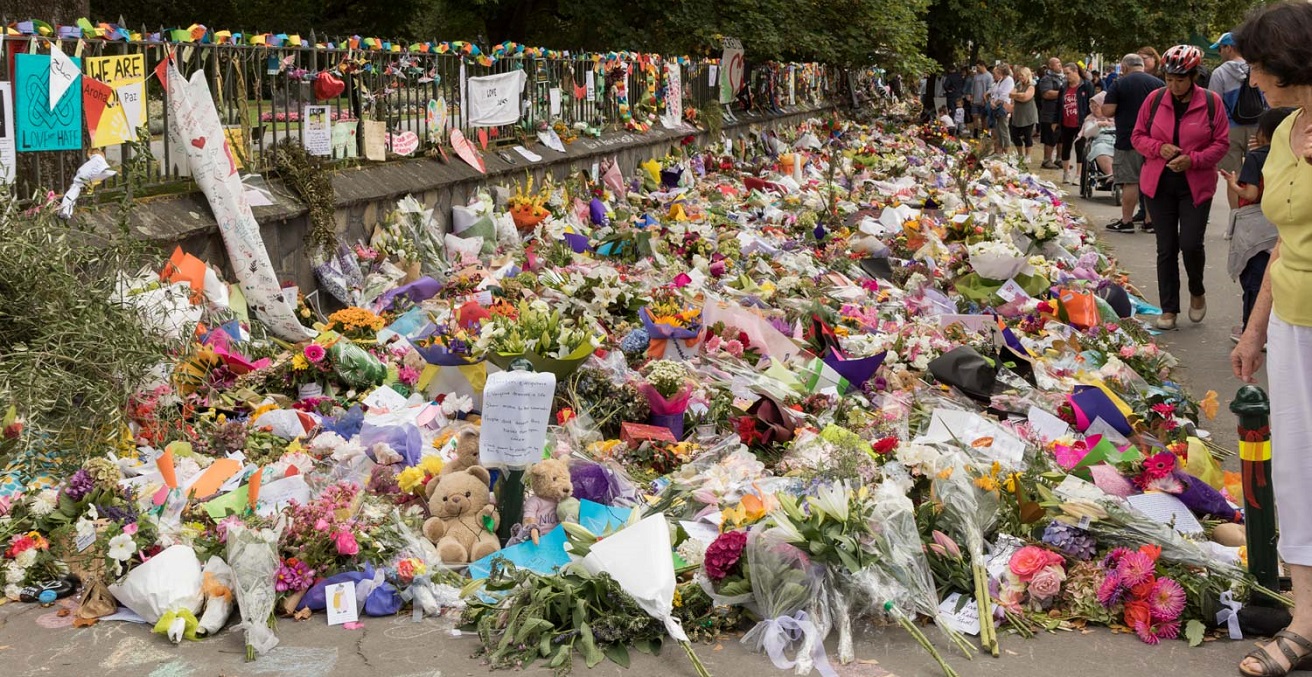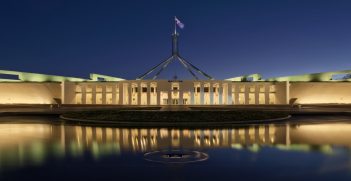Dealing with Terrorism : Judgement on the Christchurch Shooter

New Zealand has had to decide how to deal with the white supremacist terrorist who was responsible for the shooting of 51 worshippers at two Christchurch mosques. The challenges have come both inside and outside the courtroom.
Christchurch was the unwitting location of a violent and deadly attack on two mosques on 15 March 2019. 51 worshippers were killed, from the age of 3 upwards, and another 40 suffered injuries. But the impact hardly stopped there, and many families amongst the immediate and wider Muslim community in New Zealand were traumatised. New Zealanders, and key institutions like the New Zealand Police and the justice system had to manage the process of dealing with the aftermath.
The final part of the prosecution process came to an end last week with four days of a court hearing. The process began not long after the shooting when the gunman was first brought into a court room in Christchurch. As he entered, he made a white power signal with one hand. This immediately created problems for what was to occur.
The courts and the police were concerned that the shooter was going to use the courtroom as a platform for his views. He had hardly been shy at making them known during the massacre. He had livestreamed the shooting on Facebook and had published a long and rambling manifesto on why he had decided to do what he did. His guns were covered in both contemporary slogans (concerning the UN Compact on Migration) through to more obscure references to Serbian anti-Muslim politics and medieval crusades. The concern was to preserve the normal rights to fair process in a court alongside the aim of reducing the chances of megaphoning his views.
The court prepared various protocols to reduce the possibility of the latter and there was an agreement between the courts and the media in May 2019 that media coverage would not promote “white supremacist ideology.” This extended to foreign media if they wanted accreditation to the court.
Initial concerns that the shooter might use the courts to elaborate on his ideology were added to by the “not guilty” plea in June 2019, but this was eased by the guilty pleas (51 charges of murder, 41 charges of attempted murder and one under the Suppression of Terrorism Act) in March 2020. That left the final stage of the court process – sentencing.
So far, many of the fears in relation to the shooter and what he might do or say were unfounded. But now there were a number of new challenges. He still might use the court room to have his say, and speculation raised concerns regarding what the presiding judge might do. There was the question of how victims would have their say and what might be said. The sentence possibilities were canvassed, given that the scale of the offending was something that had not occurred previously in modern New Zealand.
The government made the decision to enable as many of the victims to attend the court process as requested (remember the court was meeting under COVID-19 lockdown requirements). In some cases, this meant paying for them to travel back to New Zealand and then to meet quarantine requirements. Then there was the question of the victim impact statements. A number opted to read these out in the courtroom with the shooter merely feet away. As the court first met, 66 victim impact statements were to be read out, mostly by the victims themselves, some by designated readers on behalf of the victims.
As the days went by, and there was extensive media coverage of what was said in these victim statements, others chose to ask the court if they too could read out a statement. The judge agreed and in the end, there were 91 statements read in court.
There was anger expressed but also, rather extraordinarily, forgiveness. Janna Ezat went off script, unbeknown to her husband and daughter standing beside her, to say, “I forgive you Mr. Tarrant because I don’t have hate. I don’t have revenge,” for the shooting of her son. Mirwais Waziri decided not to read his prepared impact statement but simply pointed out, “Today you are called a terrorist and you proved to the world that I was not and us, as Muslims, were not.”
Being able to have their say in front of the court and the nation, the latter via the media, as well as directly confronting the shooter, all appeared to help the victims. The shooter remained impassive throughout most of this part of the process.
He then chose not to address the court, thereby avoiding another possible issue. In fact, his “no thank you” in response to the judge’s question as to whether he had anything to say was all he said.
The judge then took 2 hours to read a list of all the victims (the injured as well as the those who had died) and to say a little about each. He then outlined the case and spoke to the shooter about his crimes before passing a sentence of life without parole, a first for New Zealand.
In the end, the guilty plea of the shooter helped avoid the long and challenging trial that was imposed on Norway by his hero, Anders Breivik. The opportunity to outline the trauma experienced by victims was important, both for their own reasons and to remind other New Zealanders what the Muslim community had endured. The court process worked well even under difficult circumstances necessitated by the pandemic.
However, there remain some outstanding issues. Led by the Deputy Prime Minister, Winston Peters, there has been a call to repatriate the shooter back to Australia and for the sentence to be served and paid for by his homeland. Others feel that the punishment should be New Zealand’s responsibility. The Prime Minister has said that she will take advice from the victim community before talking further with her Australian counterpart.
There remains the trauma, and the need to support members of the Muslim community to gain some semblance of normality. This is not a short term issue. Alongside this is the need to monitor and address matters of racism, both minor and major, which target Muslims and others. Various government agencies must accept fault for not taking Muslims’ concerns more seriously prior to the shooting. They are culpable because of their failure to take the evidence offered by Muslim leaders and others of the threat of Islamaphobia. A Royal Commission report, soon to come out, will have something to say about systems and priorities.
New Zealand is a different country to the one that existed prior to 15 March 2019. In the hours after the attack, I wrote that New Zealand had lost her innocence. No longer could the country claim to be exempt from white supremacist politics or terrorism. The reach of online hate is now as influential in New Zealand as elsewhere. It has helped that new gun laws (voted for by 119 MPs out of 120) have taken more than 60,000 now prohibited guns out of circulation. The Prime Minister led the international Christchurch call to invite online platforms to act more responsibly – albeit with mixed success. But there is much more to do. The test of its effectiveness will be in 12 months or 2 years or 5 years’ time. Will there be substantive and long term change?
Distinguished Professor Paul Spoonley, Massey University, has been researching far right groups in New Zealand for the past forty years and is updating an earlier book on these groups.
This article is published under a Creative Commons License and may be republished with attribution.





